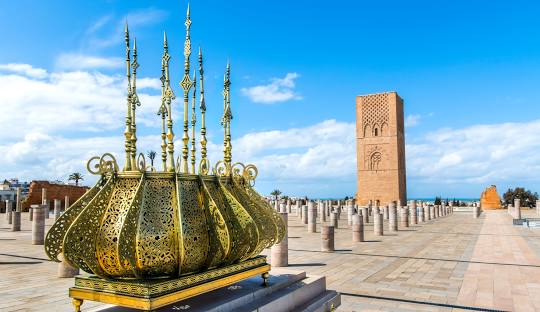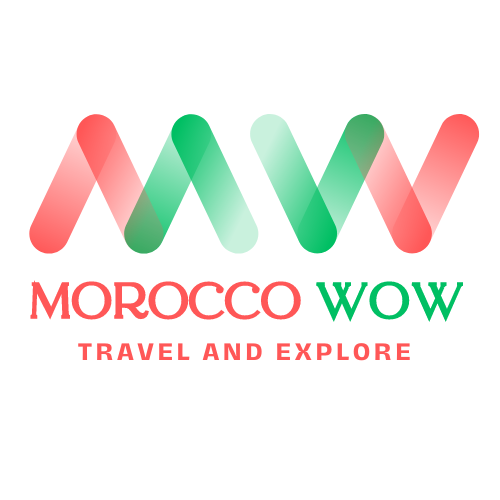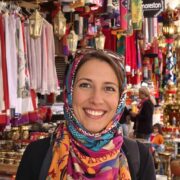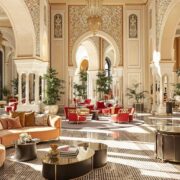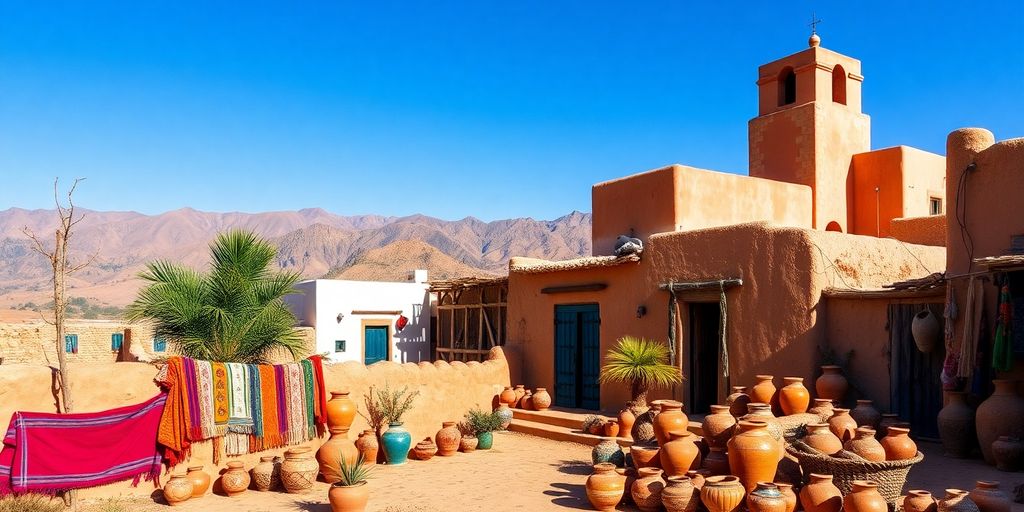
Exploring the Rich Heritage of Standard Moroccan Berber: Language and Culture Unveiled
Morocco is a country rich in history and culture, where language plays a vital role in shaping identity. Among its many languages, standard Moroccan Berber stands out as a significant part of the nation’s heritage. This article will take a closer look at the language, its cultural importance, and the challenges it faces in today’s world.
Key Takeaways
- Standard Moroccan Berber is one of the official languages of Morocco, recognized for its cultural importance.
- The language has various regional dialects, each reflecting unique local identities and traditions.
- Cultural practices, art, and music are deeply intertwined with the Berber language, showcasing its significance in Moroccan society.
- Despite its rich heritage, standard Moroccan Berber faces challenges such as declining usage among younger generations.
- Efforts are underway to promote and preserve standard Moroccan Berber through education and community initiatives.
Understanding Standard Moroccan Berber

Historical Context of Berber Languages
Okay, so Berber languages have been around in North Africa for ages. We’re talking way before Arabic even showed up. They’re the languages of the original inhabitants, and they’ve seen empires rise and fall. It’s not just one language, though; it’s a whole family of related languages and dialects. Think of it like the Romance languages, but in North Africa. Standard Moroccan Berber, or Tamazight, is a relatively new attempt to create a unified, official version. It’s meant to bridge the gap between all the different Berber groups and give the language a stronger presence in modern Morocco. It’s a bit of a political thing, too, recognizing the Berber cultural heritage as a key part of Moroccan identity.
Linguistic Features of Standard Moroccan Berber
Standard Moroccan Berber has some pretty cool features that set it apart. For one, it uses a writing system called Tifinagh, which looks super ancient and cool. The grammar is also different from Arabic and French, the other main languages in Morocco. It relies a lot on prefixes and suffixes to change the meaning of words, and the word order can be a bit flexible. It also has sounds that you won’t find in English or even Arabic, which can make it tricky for learners. Here’s a quick rundown:
- Unique consonant sounds (like emphatic consonants).
- Verb conjugation based on prefixes and suffixes.
- Nouns that can be either masculine or feminine.
It’s worth noting that Standard Moroccan Berber is still developing. Linguists and language experts are working to create a consistent grammar and vocabulary, which is no easy task when you’re dealing with so many different dialects.
Regional Variations and Dialects
This is where things get interesting. Even though there’s a "Standard" version, the reality is that Berber is spoken in many different ways across Morocco. You’ve got Tachelhit in the south, Tarifit in the north, and Central Atlas Tamazight in the Middle Atlas mountains. Each one has its own vocabulary, pronunciation, and even grammar quirks. Someone from the Rif region might have a hard time understanding someone from the Souss region, even though they’re both speaking Berber. It’s kind of like how someone from Scotland might struggle to understand someone from the Deep South in the US. The government is trying to promote the standard version in schools and media, but these Amazigh languages are still very much alive and kicking in their respective regions. It’s a balancing act between preserving local identity and creating a unified national language.
Cultural Significance of Berber Heritage
Traditional Practices and Customs
Berber culture is super rich, with traditions that have been passed down for generations. Think about the intricate weaving, the unique pottery, and the way they build their homes – it’s all connected to their history and environment. These aren’t just random things; they’re part of what makes Berber culture so special. For example, the traditional clothing often features symbols that tell stories or represent different tribes. It’s like a visual language!
- Hospitality is a big deal. Offering food and shelter to guests is a core value.
- Family is everything. Extended families often live together or nearby, supporting each other.
- Respect for elders is key. Older people are seen as wise and are consulted on important decisions.
Berber customs are deeply rooted in their connection to the land and their nomadic past. These practices reflect a way of life that values community, resilience, and a deep respect for nature.
Art and Music in Berber Culture
Art and music are HUGE in Berber culture. It’s not just about making pretty things or catchy tunes; it’s about expressing their identity and telling their stories. Berber music, with its unique rhythms and instruments, is often used in ceremonies and celebrations. Think about the pottery with its geometric designs, or the carpets woven with symbols that represent different aspects of life. It’s all connected to their history and beliefs.
| Art Form | Description
- Music is often used to tell stories and pass down history.
- Art can be found everywhere, from carpets to jewelry.
- Traditional crafts are still practiced today, keeping the culture alive.
Festivals Celebrating Berber Identity
Berber festivals are a blast! They’re a time for people to come together, celebrate their heritage, and show off their culture. It’s a chance to see traditional music, dance, and clothing all in one place. These festivals are super important for keeping the culture alive and passing it on to the next generation. One of the most well-known is the Imilchil Marriage Festival, where young people can meet and potentially find a partner. It’s a unique and vibrant expression of Berber heritage.
- Festivals often feature traditional music and dance performances.
- They’re a great way to see traditional clothing and crafts.
- They help to keep the culture alive and pass it on to the next generation.
The Role of Language in Identity Formation
Language as a Cultural Anchor
Language is way more than just a way to talk; it’s like, the backbone of our culture. It carries our history, our values, and all those little things that make us, well, us. Think about it: the stories your grandma tells, the songs your parents sing, even the jokes you share with your friends – they’re all wrapped up in language. It’s how we pass down traditions and keep our culture alive. It’s a cultural anchor that keeps us grounded.
- Language preserves cultural heritage through stories and traditions.
- It shapes our understanding of the world and our place in it.
- It provides a sense of belonging and connection to our ancestors.
Language is the vessel through which we understand our past, navigate our present, and imagine our future. It’s the invisible thread connecting generations.
Impact of Language on Community Cohesion
When people speak the same language, it’s easier to connect, right? It’s like having a secret code that only you and your friends know. This shared language creates a sense of unity and belonging. It makes it easier to work together, support each other, and build a strong community. Plus, when everyone understands each other, there’s less room for misunderstandings and conflict. It’s all about building bridges, not walls.
Generational Transmission of Berber
Passing down Standard Moroccan Berber from one generation to the next is super important. It’s not just about keeping the language alive; it’s about keeping the culture alive too. When kids learn Berber, they’re also learning about their history, their traditions, and their identity. But it’s not always easy. Sometimes, kids are more interested in learning other languages, like French or English, because they think it will help them get a better job. So, it’s up to families and communities to make sure that Berber stays relevant and exciting for the younger generation. We need to find ways to make learning Berber fun and engaging, so kids will want to learn it and pass it on to their own children. It’s about ensuring the future language lives on.
Here’s a simple breakdown of the challenges and opportunities:
| Challenge | Opportunity |
|---|---|
| Competition from other languages | Creating engaging learning resources |
| Lack of resources | Community-led language nests and immersion programs |
| Changing attitudes | Showcasing the value of Berber identity |
Challenges Facing Standard Moroccan Berber
Decline in Usage Among Youth
It’s no secret that languages evolve, and sometimes, they fade. One of the biggest worries for Standard Moroccan Berber is its decreasing use among younger generations. You see kids and teens leaning more towards Arabic, French, or even English. It’s not that they dislike Berber, but these other languages often seem more useful for school, jobs, and just keeping up with what’s trending. This shift can really impact the language’s future.
Impact of Globalization on Language Preservation
Globalization is a double-edged sword. On one hand, it connects us all; on the other, it can steamroll smaller languages and cultures. With the rise of global media and the internet, languages like English are everywhere. This makes it tough for less widely spoken languages to compete. It’s not just about practical use; it’s also about what feels cool and modern. Berber needs to find its place in this global landscape without losing its unique identity. The Amazigh language is a key part of Moroccan heritage.
Efforts to Revitalize Berber Languages
Luckily, it’s not all doom and gloom. There are some serious efforts to keep Berber alive and kicking. People are working hard to promote the language, from teaching it in schools to creating Berber content online. It’s a tough battle, but there’s a lot of passion and determination to make sure Berber doesn’t disappear. The government unveiled plans to gradually introduce the teaching of the Berber language in primary schools, marking a significant shift in educational policy.
It’s a constant balancing act. How do you make a language relevant to young people in a world that’s constantly changing? How do you preserve its traditions while also letting it grow and adapt? These are the questions that Berber language advocates are grappling with every day.
Here are some of the revitalization efforts:
- Increased Berber language school curricula.
- Community-led language nests for young children.
- Digital content creation in Berber.
Education and Standard Moroccan Berber

Incorporating Berber in School Curricula
Okay, so, getting Berber into schools is a big deal. For a long time, it wasn’t really a thing, and that’s starting to change. The idea is to make sure kids learn Berber alongside Arabic and maybe even French or English. It’s not just about language skills; it’s about connecting kids to their culture and history. It’s a slow process, but the goal is to have it taught more widely. The Moroccan education system consisting of primary and secondary levels, is slowly adapting to include Berber.
Bilingual Education Models
Bilingual education is where things get interesting. How do you teach kids in two languages at once? There are different ways to do it. Some schools might start with Berber and then introduce Arabic or French later on. Others might try to use both languages equally from the start. It really depends on the resources available and the goals of the school. It’s not always easy, but it can be really effective for kids who grow up speaking Berber at home. The mother tongue anchor a child to their heritage.
Role of Technology in Language Learning
Technology can be a game-changer. Think about apps, websites, and online courses. These tools can make learning Berber way more accessible, especially for people who don’t have access to traditional classes. Plus, it can make learning more fun and engaging. There are some cool projects out there using technology to preserve and promote Berber, and that’s pretty exciting. The tutor employs engaging methods to teach beginners.
It’s important to remember that incorporating Berber into education isn’t just about teaching a language. It’s about recognizing and valuing a culture that has been around for centuries. It’s about giving Berber speakers a sense of pride and belonging. And it’s about creating a more inclusive and diverse society for everyone.
Here are some ways technology can help:
- Interactive language learning apps
- Online dictionaries and translation tools
- Digital libraries with Berber literature and resources
- Social media platforms for language exchange
The Future of Standard Moroccan Berber
It’s interesting to think about where Standard Moroccan Berber is headed. There are definitely some challenges, but also a lot of opportunities for growth and preservation. It really comes down to how different groups—government, communities, and individuals—work together to keep the language alive and relevant.
Government Policies and Support
Government support is super important. Policies that actively promote the use of Standard Moroccan Berber in official settings, like schools and media, can make a huge difference. It’s not just about saying the language is important, but actually putting resources behind it. For example, the Ministry of Education unveiled plans to introduce Berber in primary schools, which is a big step. This kind of commitment can help ensure the language has a future.
Community Initiatives for Language Promotion
Community-led efforts are just as vital. These can range from local language classes to cultural events that celebrate Berber heritage. When people feel a sense of ownership and pride in their language, they’re more likely to pass it on to the next generation. It’s about creating spaces where the language is used and valued in everyday life.
Here are some ways communities can promote the language:
- Organizing storytelling sessions in Berber.
- Creating online forums for language learners.
- Supporting local artists who use Berber in their work.
The Influence of Media on Language Popularity
Media plays a huge role in shaping perceptions of a language. If Standard Moroccan Berber is more visible in TV shows, movies, and music, it can become more appealing to younger generations. It’s about showing that the language is not just something from the past, but something that’s relevant and cool today. The media can help anchor a child to their sociocultural heritage.
It’s also worth noting that the rise of digital media offers new avenues for language promotion. Online platforms can be used to create educational content, connect speakers from different regions, and showcase the richness of Berber culture. This can help to counter the impact of globalization and ensure that the language continues to thrive in the digital age.
Comparative Analysis with Other Languages in Morocco
Interaction with Arabic Dialects
Okay, so, Standard Moroccan Berber doesn’t exist in a vacuum, right? It’s bumping elbows with a bunch of other languages, especially Arabic. More specifically, Darija, which is Moroccan Arabic. The interaction is super interesting because you get this mix of loanwords and grammatical influences going both ways. It’s not always a smooth relationship, though. Sometimes there’s tension because of the historical dominance of Arabic, but also a lot of code-switching in everyday conversations. It’s like people are constantly mixing and matching depending on who they’re talking to and what they’re talking about.
Influence of French and Spanish
French and Spanish? Oh yeah, they’re all over the place. You can’t walk down the street without seeing signs in French, and in the north, Spanish is pretty common too. This is all thanks to Morocco’s colonial past. French is still used a lot in business and government, and even though it’s not an official language, it’s kind of a big deal. Spanish is more regional, but it’s definitely left its mark, especially in terms of vocabulary. It’s wild how these languages have stuck around and continue to shape the way people talk. Some Darija speakers even mix French words into their sentences without thinking about it.
Multilingualism in Moroccan Society
Morocco is a crazy mix of languages. You’ve got Arabic, Berber, French, Spanish, and even English is becoming more popular. Most Moroccans are at least bilingual, and a lot are multilingual. It’s just part of life. But it also creates some challenges. Like, which language do you use in schools? Which one do you use for official documents? It’s a constant balancing act. But honestly, it’s also what makes Morocco so unique. This multilingualism shapes the Moroccan culture and identity in a big way.
It’s important to remember that language isn’t just about communication; it’s about identity, culture, and history. The way these languages interact in Morocco tells a story about the country’s past, present, and future.
Wrapping Up the Journey Through Berber Heritage
In conclusion, the exploration of Standard Moroccan Berber and its cultural backdrop reveals a vibrant and complex identity. The Amazigh languages are not just a means of communication; they carry the weight of history and tradition. As Morocco moves forward, it’s crucial to keep these languages alive and thriving. The blend of old and new, tradition and modernity, is what makes Morocco unique. By valuing and promoting Berber culture, we can ensure that future generations appreciate their roots. So, whether you’re wandering through the Atlas Mountains or sipping mint tea in a bustling market, remember that every word spoken in Berber is a piece of Morocco’s rich tapestry.
Frequently Asked Questions
What is Standard Moroccan Berber?
Standard Moroccan Berber refers to the standardized version of the Amazigh languages spoken in Morocco, which includes dialects like Tamazight.
Why is Berber important to Moroccan culture?
Berber is a key part of Morocco’s identity, representing the history and traditions of the Amazigh people, who are the indigenous population of the country.
How does Standard Moroccan Berber differ from other Berber dialects?
Standard Moroccan Berber is a unified form that combines features from various regional dialects, making it easier for speakers from different areas to communicate.
What challenges does the Berber language face today?
The Berber language is facing challenges like declining use among younger generations and the influence of global languages like English and French.
What efforts are being made to preserve the Berber language?
There are many initiatives focused on teaching Berber in schools, promoting its use in media, and encouraging cultural events that celebrate Berber heritage.
How can I learn Standard Moroccan Berber?
You can learn Standard Moroccan Berber through language courses, online resources, and community programs that focus on teaching the language.
Recent Posts
Empowering Adventures: A Solo Female Travel Guide to Morocco in 2025
Affordable Ways to Fly to Marrakech from Manchester: Your Ultimate Guide
Experience Luxury at the Hotel Sofitel Lounge and Spa Marrakech: A Gateway to Relaxation and Elegance
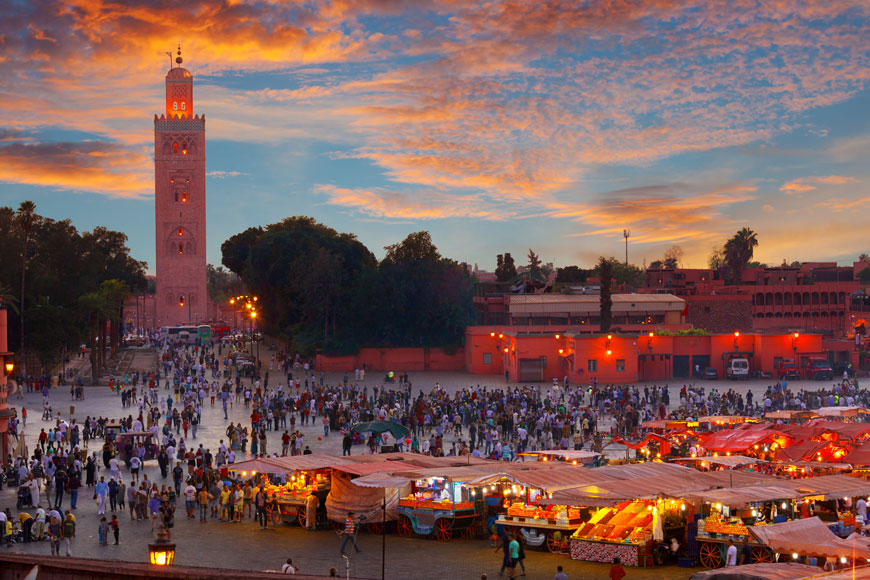
Marrakech

Chefchaouen
